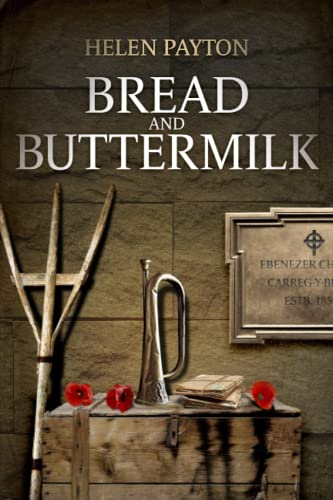Bread and Buttermilk
1922. On Easter day in Carreg-y-Bedd, Denbighshire, Minister Ellis conducts the special Sabbath service in Ebenezer chapel; Gypsies arrive on the village common; and the corpse of World War I veteran Gwyn Parry floats to the surface of Pwll Berw pool. Gwyn’s closest friend, Twm, the eldest son among Emyr and Mali Tudor’s five children, is the first to find Gwyn’s body. Twm’s determination to discover whether Gwyn’s death was accident, suicide, or foul play structures the book, but this is not a murder mystery; it’s a larger portrait of a Welsh village’s struggle to adjust to the loss of a generation. Twm’s many reminiscences about pre-War Carreg-y-Bedd recall the lost Evan, the leader of the trio in which he and Gwyn were followers, and one of the many village boys who died in France. The book also reflects on the difficulties of young survivors trapped by old values. Twm, his older sister Bethan, and his younger sister Caron struggle to find a path forward in a world the war has changed, hampered by their mother’s uncompromising refusal to let go of her belief in farm and chapel.
The strength of this lengthy novel is the fine research on which it is based. Payton convincingly portrays planting, harvesting, lambing, shearing, gardening, gathering, cleaning and cooking, carefully demonstrating the connection of endless labor to the certainties of chapel religion. Another strength is the depth of the book’s characters, particularly Mali, the matriarch whose criticism threatens to smother every ember of independence and talent in her children. Her portrayal is pitiless, and the shocking result of her self-righteous blindness, as described in the fifty concluding pages, is extremely powerful.










